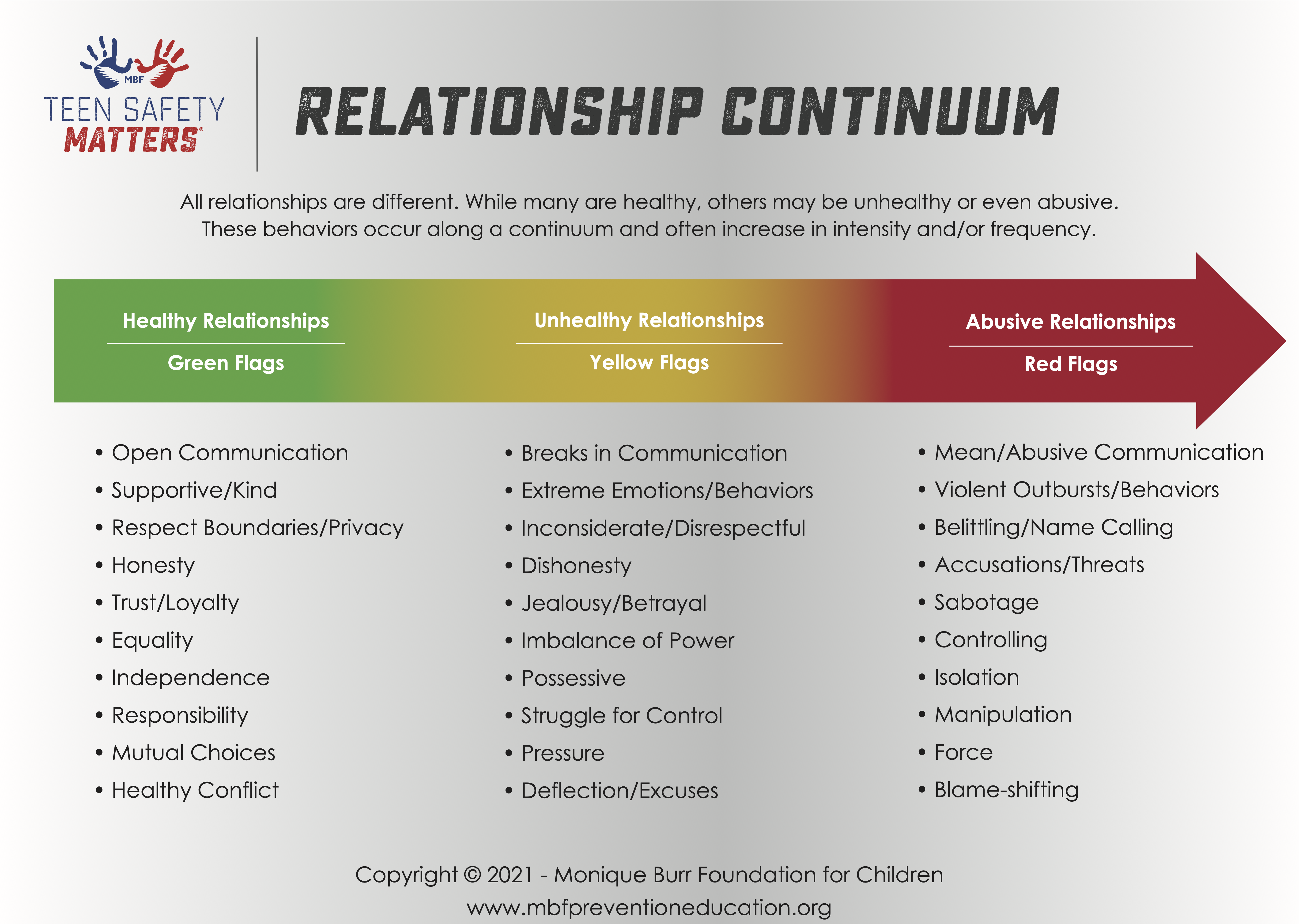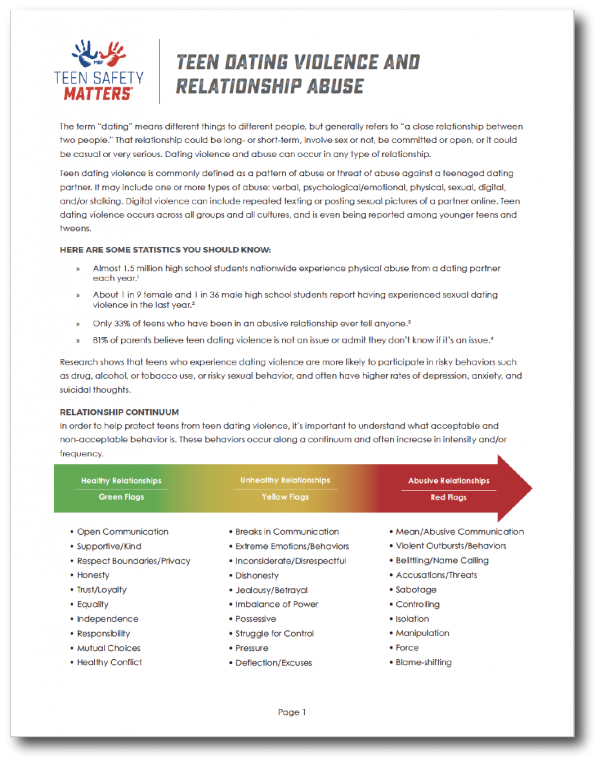The teenage years are a time of rapid changes and physical, emotional, and social growth. Our children are often not prepared for these changes, especially when it comes to dating.
The term “dating” means different things to different people, but a general definition is “a close relationship between two people.” That relationship could be long term, short term, involve sex or not, be committed or open, or it could be casual or very serious. The important thing to understand is that dating violence and abuse can occur in any type of relationship.
Teen dating violence is commonly defined as a pattern of abuse or threat of abuse against a teenaged dating partner. It may include one or more types of abuse: verbal, psychological/emotional, physical, sexual, digital, and/or stalking. Digital violence can include repeated texting or posting sexual pictures of a partner online.
Here are some statistics you should know:
– Almost 1.5 million high school students nationwide experience physical abuse from a dating partner each year.1
– About 1 in 9 female and 1 in 36 male high school students report having experienced sexual dating violence in the last year.2
– Only 33% of teens who have been in an abusive relationship ever tell anyone.3
– 81% of parents believe teen dating violence is not an issue or admit they don’t know if it’s an issue.4
Research shows that teens who become victims of dating violence are more likely to participate in risky behaviors such as drug, alcohol, or tobacco use, or risky sexual behavior, and often have higher rates of depression, anxiety, and suicidal thoughts.
Teen dating violence occurs across all groups and all cultures, and is even being reported among younger teens and tweens. In order to help protect your teen from teen dating violence, it’s important for you (and your child) to understand what acceptable and non-acceptable behavior is.

You should be aware of these early warning signs:
- Your child or your child’s partner is extremely jealous or possessive
- You notice unexplained marks or bruises
- Your child’s partner emails or texts excessively
- You notice that your son or daughter is depressed or anxious
- Your son or daughter stops participating in extracurricular activities or other interests
- Your child stops spending time with other friends and family
- Your child’s partner abuses other people or animals
- Your child begins to dress differently
What can you do to prevent teen dating violence?
-
- Check with your child’s school to see what type of school-based program/curriculum they may be using that addresses teen dating violence. If they are not using a program, encourage them to learn more about and use the MBF Teen Safety Matters® program for middle and high schools.
-
- Start the conversation! Make sure your teen knows what acceptable and unacceptable behavior is. You also want to make sure they can make informed decisions and recognize potentially dangerous situations. Read Darkness to Light’s Talking To Teens About Healthy Relationships blog to learn about the four topics to discuss with your teen.
-
- Make sure they’re prepared. Help them develop a Safety Plan, which is a practical guide to help them lower their risk of being hurt by an abuser. It can help them identify Safe Adults, friends, and family they can reach out to when needed. A sample Safety Plan can be found at http://www.loveisrespect.org/pdf/Teen-Safety-Plan.pdf
-
- Ask your child to take the Healthy Relationship Quiz by Love is Respect.
Additional Resources
- National Teen Dating Violence Hotline 1-866-331-9474 (1-866-331-8453 TTY) or Text “loveis” to 22522
- Domestic Violence Awareness Project – A project of the National Resource Center on Domestic Violence: https://www.dvawareness.org/
- Love Is Respect is the national resource to disrupt and prevent unhealthy relationships and intimate partner violence by empowering young people through inclusive and equitable education, support, and resources. Visit www.loveisrespect.org for more information.
- CDC’s Dating Matters: Strategies to Promote Healthy Teen Relationships: www.cdc.gov/violenceprevention/datingmatters

Sources:
- Centers for Disease Control and Prevention, “Physical Dating Violence Among High School Students—United States, 2003,” Morbidity and Mortality Weekly Report, May 19, 2006, Vol. 55, No. 19
- Centers for Disease Control and Prevention: https://www.cdc.gov/violenceprevention/intimatepartnerviolence/teendatingviolence/fastfact.html
- Liz Claiborne Inc., conducted by Teenage Research Unlimited, (February 2005)
- Love is Respect: https://www.loveisrespect.org/pdf/Dating_Abuse_Statistics.pdf
Categorized in: Blog, Child Abuse, Exploitation



